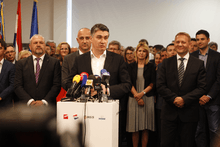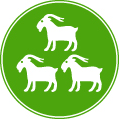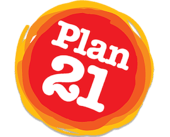People's Coalition (Croatia)
People's Coalition Narodna koalicija | |
|---|---|
_logo.jpg) | |
| Leader | Zoran Milanović |
| Founded | 23 November 2010 |
| Headquarters | Zagreb, Croatia |
| Political position | Centre-left |
| Colours | Red |
| Slogan | Safe Direction for Croatia |
| Sabor |
52 / 151 |
| European Parliament |
4 / 11 |
| County Prefects |
7 / 21 |
| Mayors |
36 / 128 |
| Website | |
|
narodnakoalicija | |
The People's Coalition (Croatian: Narodna koalicija) is a centre-left political alliance in Croatia consisting of four political parties.
The coalition was formed in 2010 as Kukuriku Coalition (Croatian: Kukuriku koalicija). This somewhat facetious name meaning 'cock-a-doodle-doo', taken from a restaurant of the same name in Kastav where the coalition leaders first convened in July 2009, became well known and was eventually taken as the coalition's official name.[1][2][3] The coalition originally consisted of four centrist and center-left parties in the Croatian Parliament: Social Democratic Party of Croatia (SDP), Croatian People's Party – Liberal Democrats (HNS-LD), Croatian Party of Pensioners (HSU) and Istrian Democratic Assembly (IDS).[4] Colation won 2011 parliamentary election and successfully formed Government led by Zoran Milanović (SDP).
For the 2015 parliamentary election, the coalition changed its name into Croatia is Growing (Croatian: Hrvatska raste), referring to the continuous growth of economic indicators such as GDP, industrial production, exports and employment rate that was made in the last two years of mandate of the Milanović's government. The coalition was joined by the Croatian Labourists – Labour Party (HL), Authentic Croatian Peasant Party (AHSS) and Zagorje Party (ZS), while IDS left. Nevertheless, leader of IDS Boris Miletić explicitly pointed out that his party would still continue to collaborate with the coalition. After the coalition failed to achieve agreement with Bridge of Independent Lists on forming new government, it moved to the opposition.
On July 16, 2016, SDP, HNS-LD, HSU and HSS signed coalition agreement in Zabok and have thus re-established the coalition under a new name, People's Coalition (Croatian: Narodna koalicija).
History



Kukuriku Coalition
The idea of a joint party list of the main center-left parties SDP and HNS-LD was discussed in the 2007 general election, however ultimately each party contested the election separately.[5] The election resulted in HDZ forming a Government led by Ivo Sanader and SDP and HNS-LD remaining in Opposition. After the resignation of Prime Minister Sanader in 2009, SDP, HNS-LD and IDS started discussing the possibility of contesting the 2011 parliamentary election more extensively.[6] On November 23, 2010 the three parties along with HSU signed a declaration "Alliance for Change" officially confirming their intention of a joint appearance in the next election.[7]
On September 15, 2011, the coalition officially presented their manifesto for the 2011 general election called "Plan 21" in Zagreb.[1][2] On 2011 elections Coalition won the majority in 8 out of 10 electoral districts which resulted in gaining 81 out of 151 seats in the Parliament. On December 23, 2015, the coalition formed the 10th Croatian Government led by Zoran Milanović. The coalition participated on the 2013 European Parliament election and won 5 out of 12 Croatian seats. For the 2014 European Parliament election, the coalition was joined by the Independent Democratic Serb Party eventually winning 4 out of 11 Croatian seats.
Croatia is Growing
For the 2015 parliamentary elections, the coalition changed its name into Croatia is Growing, and was joined by Croatian Labourists – Labour Party (HL), Authentic Croatian Peasant Party (AHSS) and Zagorje Party (ZS), while IDS left. Nevertheless, leader of IDS Boris Miletić explicitly pointed out that his party would still continue to collaborate with the coalition, and has later took an active part in the 2015 post-election negotiations on forming new government as de facto member of the coalition. The coalition eventually ended up winning the majority in 5 out of 10 electoral districts and eventually gained 56 out of 151 seats in the Parliament. After more than 40 days of negotiations with the Bridge of Independent Lists (MOST) and numerous twists and turns mainly due to MOST frequently changing terms, the coalition failed to achieve agreement with MOST on forming new government, which was formed by the independent Tihomir Orešković who was supported by the center-right Patriotic Coalition. Coalition party members returned to the opposition. On April 9, 2016, president of HNS-LD, Ivan Vrdoljak, announced that the coalition ceased to exist since each party had its own parliamentary club adding that his party would still cooperate with (former) coalition members.[8]
People's Coalition
On July 9, 2016, Zoran Milanović announced that the SDP, HNS-LD and HSU would enter into the People's Coalition (Croatian: Narodna koalicija) for the 2016 parliamentary election, adding that the coalition would be ideologically far-reaching and diverse, as it also encompasses the center-right Croatian Peasant Party.[9] The three center-left parties previously formed the Croatia is Growing coalition with the Croatian Labourists - Labour Party and two smaller parties winning 56 seats in the November 2015 parliamentary election, while the Croatian Peasant Party contested the elections as part of the Patriotic Coalition which won 59 seats (2 of those going to HSS itself). One of HSS's two parliamentary representatives and former leader Branko Hrg left the party after the party joined the coalition.[10] On the other hand, Authentic Croatian Peasant Party and Croatian Peasant Party of Radić Bothers which had more than 6.000 members decided to merge into HSS after they split from it in 2007 dissatisfied with HSS's cooperation with HDZ.[11]
Members
| Logo | Party name | Leader | Ideology | Seats in the Parliament (2016) | Member since |
|---|---|---|---|---|---|
 | Social Democratic Party of Croatia | Zoran Milanović | Social democracy | 38 / 151 | 2011– |
 | Croatian People's Party – Liberal Democrats | Ivan Vrdoljak | Liberalism | 9 / 151 | 2011– |
_logo.jpg) | Croatian Peasant Party | Krešo Beljak | Agrarianism | 5 / 151 | 2016– |
| | Croatian Party of Pensioners | Silvano Hrelja | Rights of pensioners | 1 / 151 | 2011– |
Former members
| Logo | Party name | Leader | Ideology | Seats in the Parliament (2016) | Since-until |
|---|---|---|---|---|---|
 | Istrian Democratic Assembly | Boris Miletić | Regionalism | 3 / 151 | 2011–2015 |
| | Croatian Labourists – Labour Party | Tomislav Končevski | Democratic socialism | 0 / 151 | 2015–2016 |
| | Authentic Croatian Peasant Party | Stanko Grčić | Agrarianism | 0 / 151 | 2015–2016 |
| | Zagorje Party | Miljenko Jerneić | Regionalism | 0 / 151 | 2015–2016 |
Logos
-

Kukuriku Coalition
2011–2015 -

Croatia is Growing
2015-2016
See also
References
- 1 2 "Kukuriku koalicija: Ukinut ćemo POVLAŠTENE mirovine zastupnicima! 'Plan 21'". Jutarnji list (in Croatian). 2011-09-15. Retrieved 2011-09-15.
- 1 2 "Program Kukuriku koalicije: Rast BDP-a od 2 do 4%, manji doprinosi, ukidanje povlaštenih mirovina" (in Croatian). SEEbiz.eu. 2011-09-15. Retrieved 2011-09-15.
Kukuriku koalicija je savez četiriju stranaka koje zaokupljaju slične vrijednosti i kojima je zajednički cilj - probuditi hrvatske potencijale i stvoriti ekonomski stabilnu Hrvatsku u kojoj žive zadovoljni građani, opisuje se oporba te pojašnjava što je Plan 21.
- ↑ "Zašto baš 'Kukuriku koalicija'?". dnevnik.hr (in Croatian). 2011-10-07. Retrieved 2012-09-16.
- ↑ "Kukuriku koalicija zajedno izlazi na sljedeće izbore". Slobodna Dalmacija (in Croatian). 2010-11-08. Retrieved 2011-02-03.
- ↑ "Antunović - Pusić: Zajedno protiv HDZ-a". jutarnji.hr (in Croatian). 26 February 2007. Retrieved 15 December 2012.
- ↑ Milanović okupio opoziciju, Poslovni dnevnik
- ↑ SDP, HNS, IDS i HSU izlaze na izbore kao ‘savez za promjene’, Poslovni dnevnik
- ↑ Vrdoljal - Koalicije "Hrvatska Raste’ više nema, tportal
- ↑ Goran Mehkek / CROPIX (2016-07-09). "SDP ODLUČIO S KIM ĆE SVE U KOALICIJU 'Ovo je najšira koalicija u hrv. političkoj povijesti' -Jutarnji List". Jutarnji.hr. Retrieved 2016-08-13.
- ↑ "Hrg izašao iz HSS-a i napao čelništvo - Beljak uzvratio: On je bio član Saveza komunista". Croatian Radiotelevision (in Croatian). 2016-07-17. Retrieved 2016-07-18.
- ↑ "Više od 6 000 članova vraća se u HSS! - Hrvatska seljačka stranka". Hss.hr. Retrieved 2016-08-13.
External links
- Official website (Croatian)
